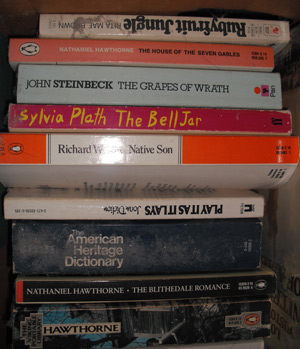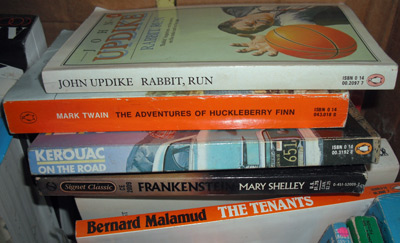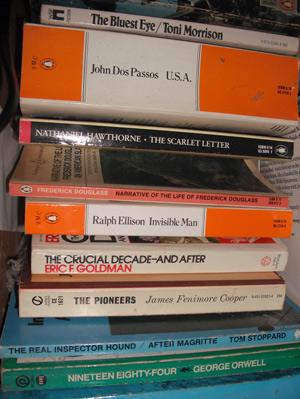I’m currently sitting opposite the Pacific Ocean in one of the most pleasant and laid-back places in the world — Santa Barbara’s beachfront. However, I’m not doing a touristy travelogue and my enjoyment of the relaxed atmosphere is interspersed with virtual panic-attacks about the amount of money it costs to be here.
But I’m here because this place (as very attentive readers of this blog may have realised) Â is somewhere that’s ingrained in my psyche as I spent an academic year here as part of my undergraduate degree course — although it wasn’t here in chic downtown Santa Barbara (see photo below — taken from my hotel balcony) but the more rough-and-ready student ghetto of Isla Vista.
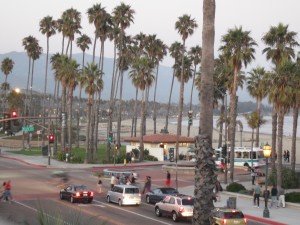
Isla Vista is a community of at least 10,000 students (possibly many more) and very few other people. I ended up living almost in the middle of it — in an apartment that bordered on its central business district (if that’s what various student bookshops, liquor stores, fast food businesses and so on can be called).
While this sounds quite anarchic and hedonistic, I probably reacted against it all to a large extent when I arrived — for one thing I was so young that it was illegal for me to buy alcohol, which was something very constricting for someone on the third year of a British university course.
I’m quite astounded now at how I managed to cope — aged 20 — being deposited on the other side of the globe in the days before the internet and e-mail. This was when phone calls home were so expensive you made them once a month and when national news came via the reading room of the university library’s periodical collection rather than a few clicks on a computer.
Perhaps, if anything, this experience of being transplanted between cultures has given me an appreciation of what British culture looks like from the outside — which is perhaps a theme of the novel.
Moreover, while it sits at odds with my northern English upbringing and redbrick (British) university roots, there’s always going to be something in me of the chilled-out Californian. I spent the best part of a year with the TV stations I watched most being the local KEYT Santa Barbara ABC franchise but also the local Los Angeles stations — while the names of suburbs in LA might seem a little random to many with a superficial knowledge of the area, I’ve gained mine from effectively being a local for a year.
Not that this has much to do at all with the profoundly English themes in my novel but hopefully the work I did here in Santa Barbara (especially the screenwriting courses) will seep subconsciously into the novel — or perhaps more overtly as I’m wondering about converting a character into a Californian.
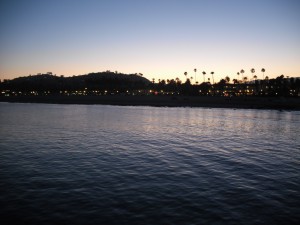
And Santa Barbara (or Montecito — the other end of town to the university) is home to large numbers of movie, and other, stars. In a very tenuous Kim connection apparently the second biggest celebrity wedding of the year took place a mile or so up the road — Kim Kardashian who’s apparently very famous for being famous married a basketball player. This is all the sort of stuff that Emma disdains interest in but by which she’s actually fascinated.
So, appropriately, it’s on to Hollywood and Beverly Hills today (where, ridiculously, the internet costs extra in the hotel so I may be quiet a while).
And I’ve been very slow in picking this up but perhaps the biggest subconscious influence of all is how my novel’s title is an almost literal translation of the biggest city in California — Los Angeles — the Angels.

